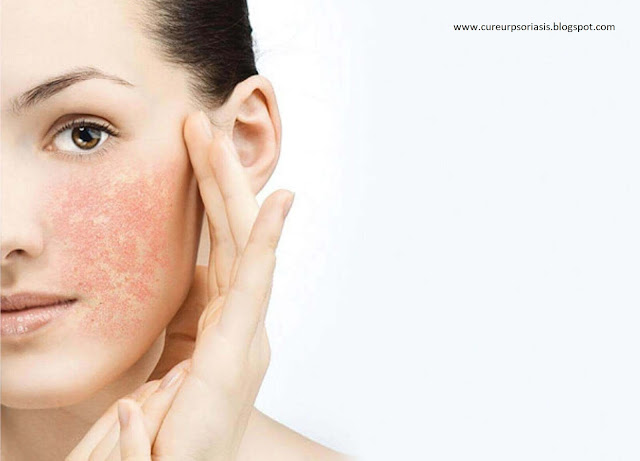Psoriasis on the Face
Psoriasis on the Face
Symptoms, Causes, and Treatment of Facial Psoriasis
Introduction
Psoriasis is a chronic skin condition that can affect various parts of the body, including the face. Facial psoriasis can be particularly distressing as it affects a visible and sensitive area. It is characterized by red, inflamed patches of skin, scaling, and sometimes itchiness. In this article, we will provide a comprehensive overview of psoriasis on the face, including its symptoms, causes, triggers, and available treatment options.
I. Understanding Facial Psoriasis
Facial psoriasis is a specific form of psoriasis that occurs on the face. It can affect any area, including the forehead, cheeks, nose, and chin. The symptoms of facial psoriasis are similar to other types of psoriasis and may include redness, inflammation, scaling, and dryness of the skin. The severity and extent of facial psoriasis can vary from person to person.
Facial psoriasis can have a significant impact on a person's self-esteem and emotional well-being, as it is highly visible. It can cause discomfort, and itchiness, and may affect daily activities, such as applying makeup or shaving.
II. Causes and Triggers of Facial Psoriasis
The exact cause of facial psoriasis is not fully understood. However, it is believed to be related to an abnormal immune response that leads to accelerated production of skin cells. Some factors that can trigger or worsen facial psoriasis include:
1. Genetic Predisposition: Psoriasis has a genetic component, and individuals with a family history of the condition may be more prone to developing facial psoriasis.
2. Environmental Factors: Certain environmental factors, such as cold weather, dry air, or exposure to irritants, can trigger or exacerbate facial psoriasis symptoms.
3. Stress: Emotional stress and anxiety can contribute to the onset or worsening of psoriasis symptoms, including facial psoriasis.
4. Infections: Infections, particularly streptococcal throat infections, can trigger or worsen facial psoriasis in some individuals.
5. Medications: Certain medications, such as antimalarials, beta-blockers, and lithium, may trigger or aggravate facial psoriasis in susceptible individuals.
III. Treatment Options for Facial Psoriasis
Treating facial psoriasis requires a gentle and cautious approach due to the delicate nature of facial skin. The treatment options aim to reduce inflammation, manage symptoms, and improve the appearance of the affected areas. Here are some common treatment approaches for facial psoriasis:
1. Topical Treatments: Topical corticosteroids, vitamin D analogs, calcineurin inhibitors, or coal tar preparations may be prescribed to reduce inflammation and alleviate symptoms. It is important to follow the healthcare provider's instructions for applying these medications to the face.
2. Moisturizers and Emollients: Regularly applying moisturizers or emollients to the face can help hydrate the skin, reduce dryness, and minimize discomfort. Look for gentle, fragrance-free products specifically formulated for sensitive facial skin.
3. Phototherapy: Light therapy or phototherapy, such as narrowband ultraviolet B (NB-UVB) or targeted ultraviolet B (TBUVB), may be recommended for facial psoriasis. Controlled exposure to specific wavelengths of light can help reduce inflammation and improve symptoms. This treatment should be administered under medical supervision.
4. Systemic Medications: In severe or resistant cases, systemic medications such as oral retinoids, methotrexate, or biologic agents may be prescribed. These medications work by suppressing the immune system and reducing inflammation throughout the body.
5. Lifestyle Modifications: Making certain lifestyle changes can complement medical treatments for facial psoriasis. These may include managing stress, maintaining a healthy diet, avoiding triggers like harsh facial cleansers or makeup products, and protecting the face from extreme weather conditions.
6. Support and Self-Care: Seeking emotional support from healthcare professionals, support groups, or counseling services can be beneficial for individuals dealing with facial psoriasis. Practicing good self-care, including gentle cleansing, avoiding picking or scratching the affected areas, and protecting the skin from excessive sun exposure, can also help manage symptoms.
Conclusion
Facial psoriasis can be a challenging condition to manage due to its visibility and potential impact on self-esteem. However, with the right treatment approach and support, individuals with facial psoriasis can effectively manage their symptoms and improve their quality of life. Seeking medical advice, following a personalized treatment plan, and implementing self-care practices can help minimize inflammation, reduce discomfort, and maintain the health and appearance of the facial skin. It is important for individuals with facial psoriasis to remember that they are not alone and that there are resources available to support them on their journey to managing this condition.
















Comments
Post a Comment